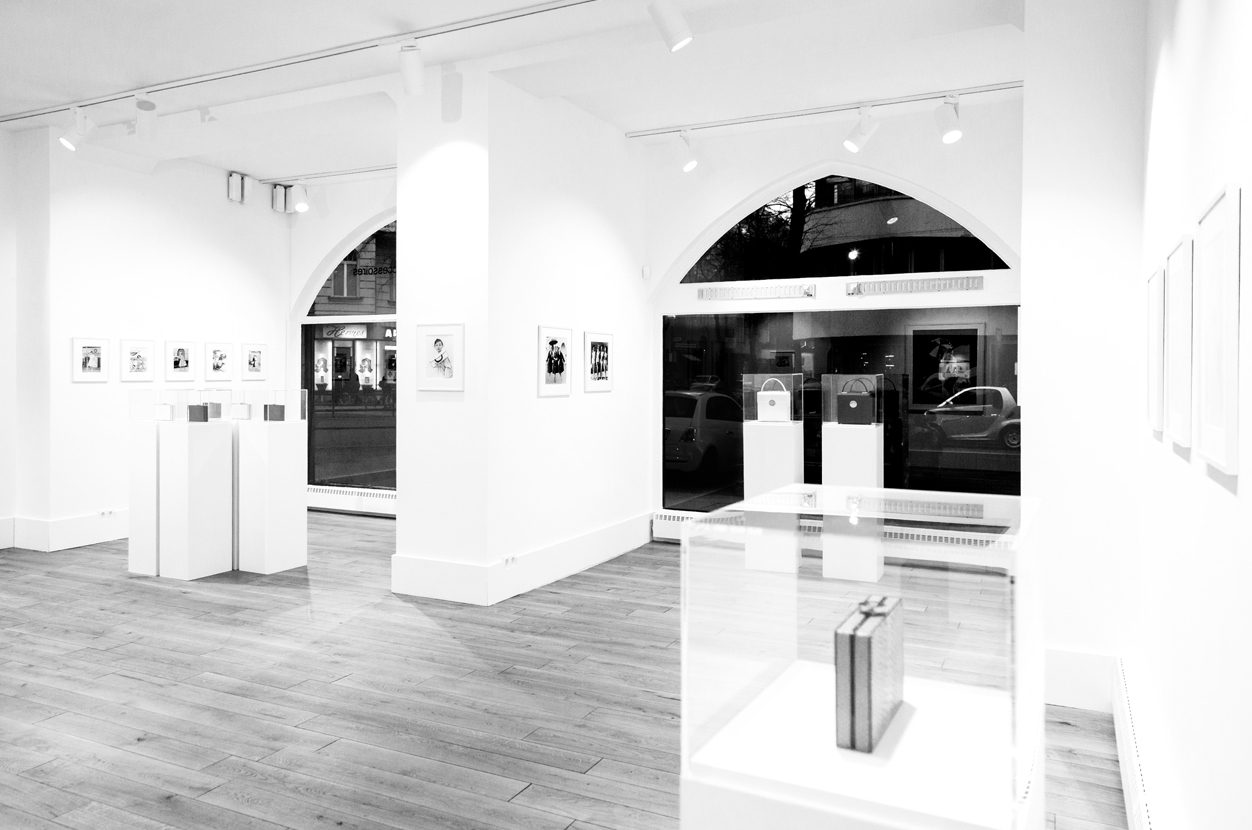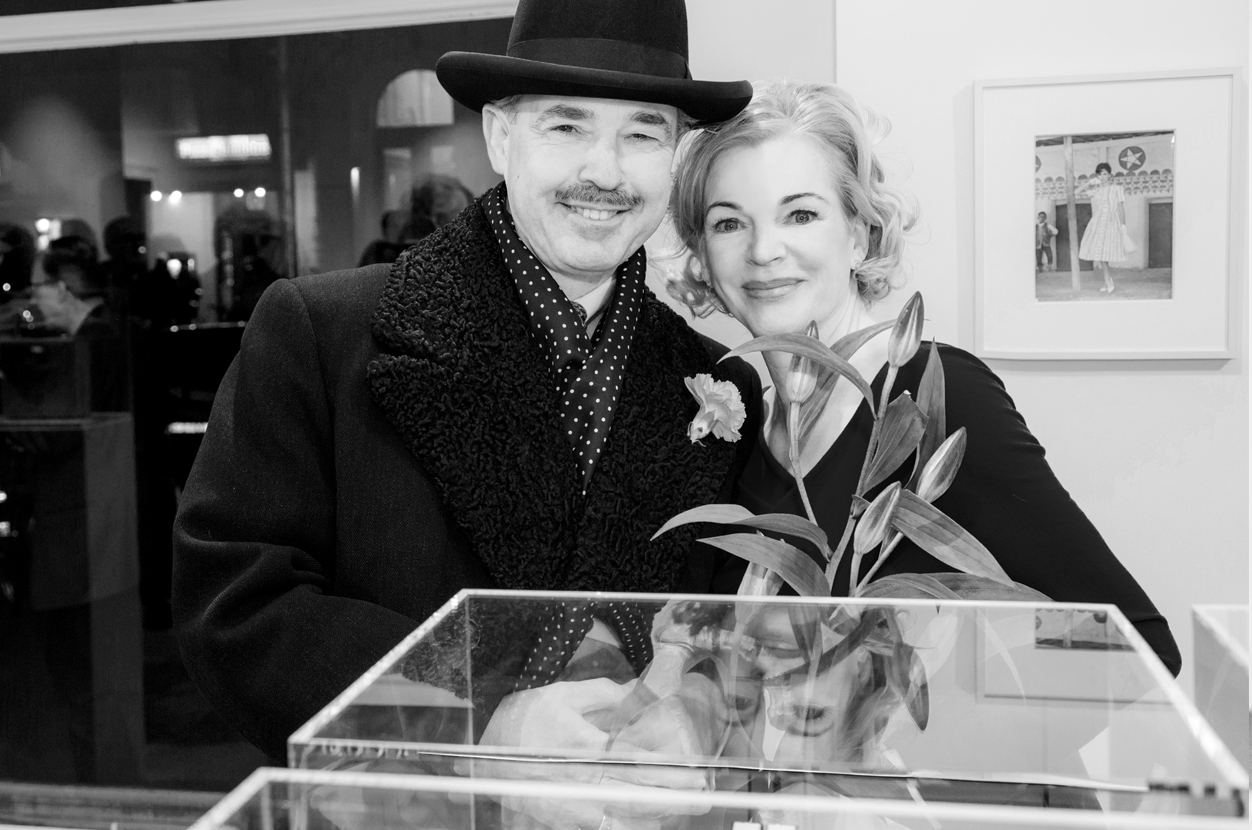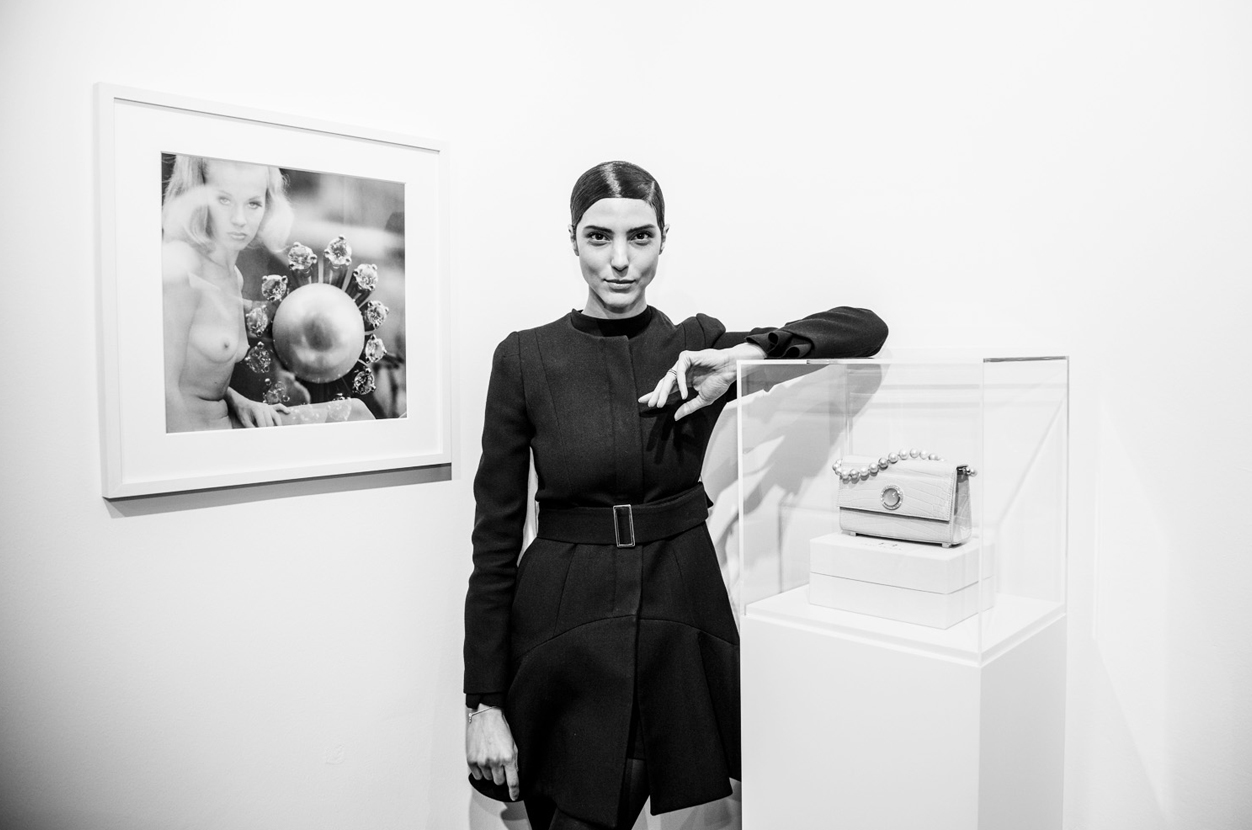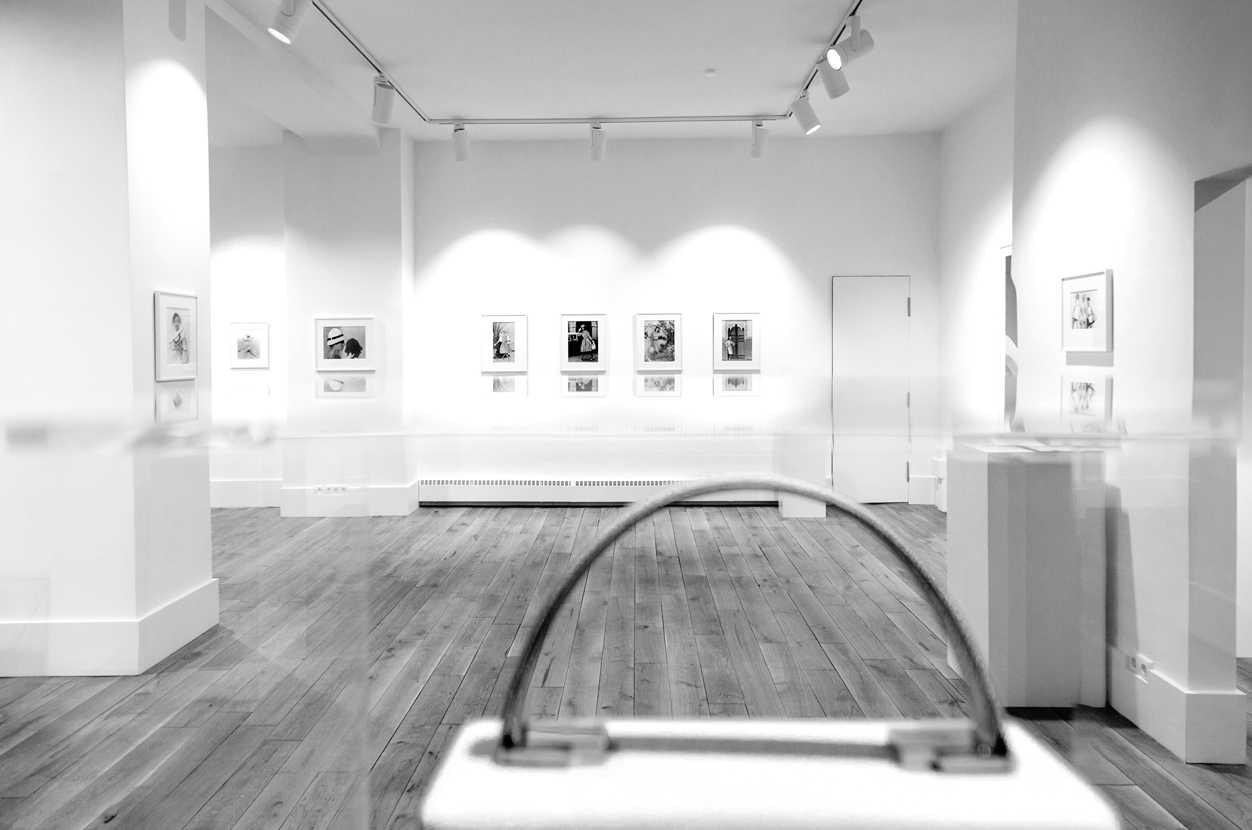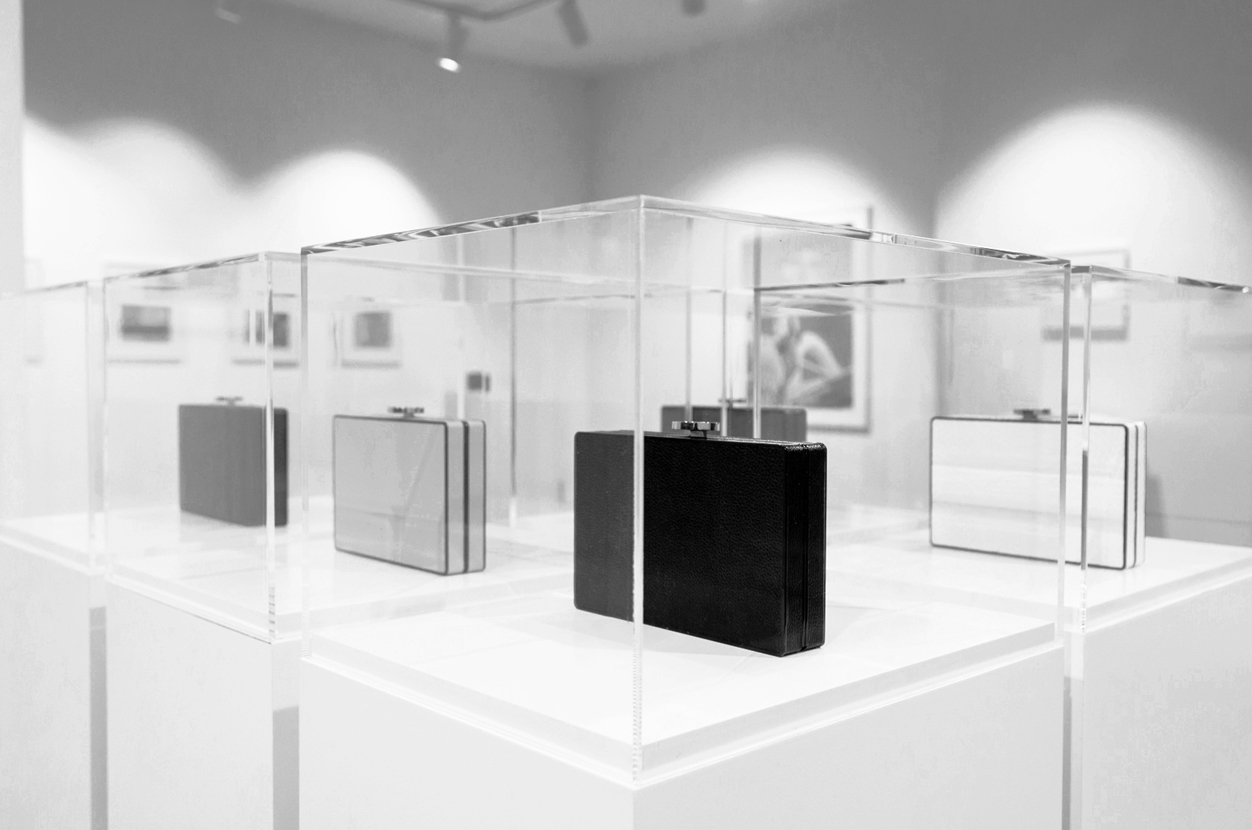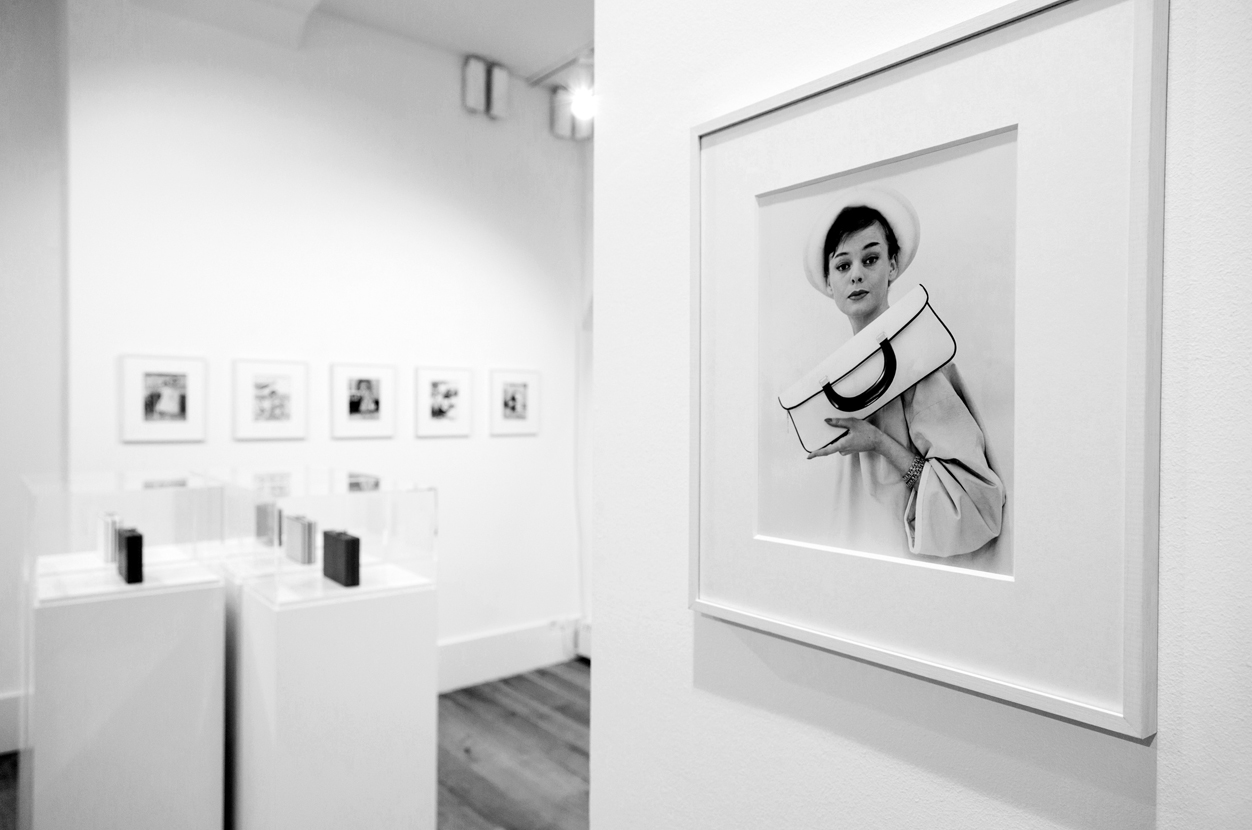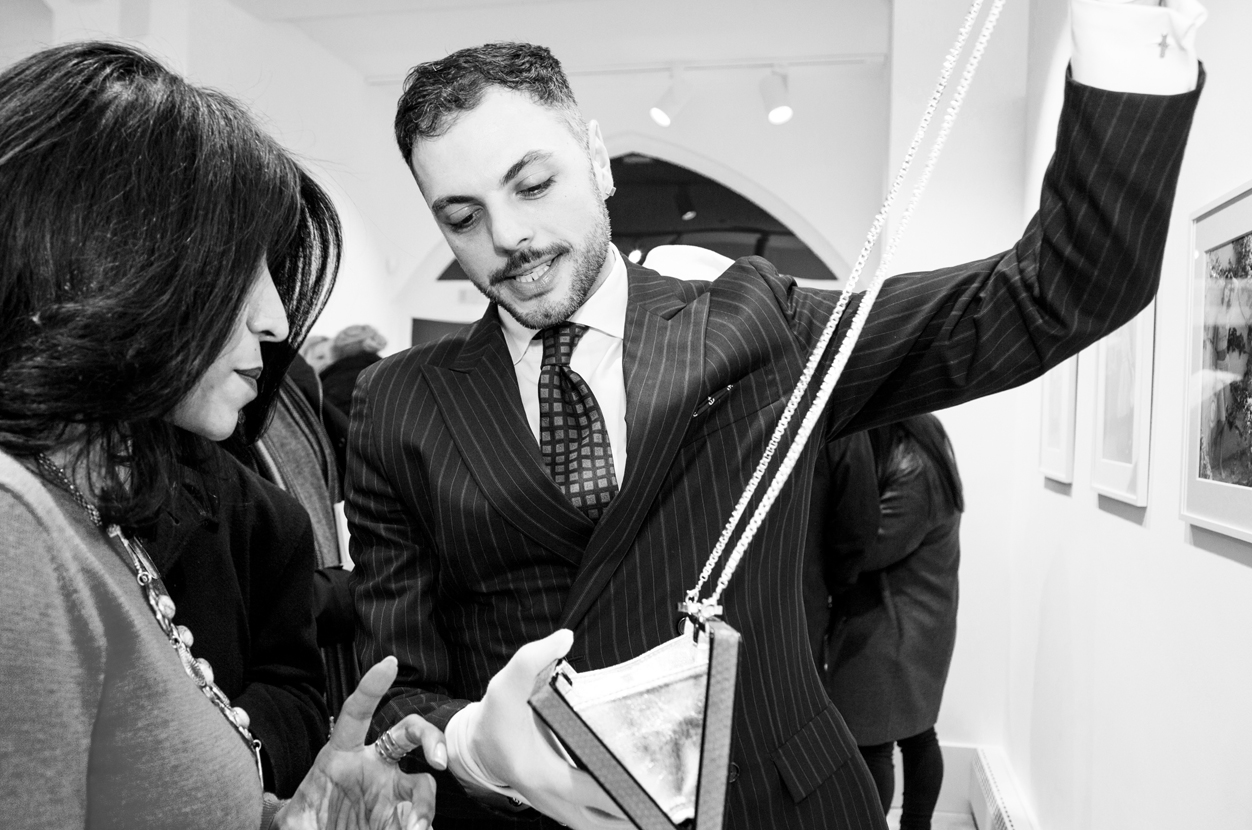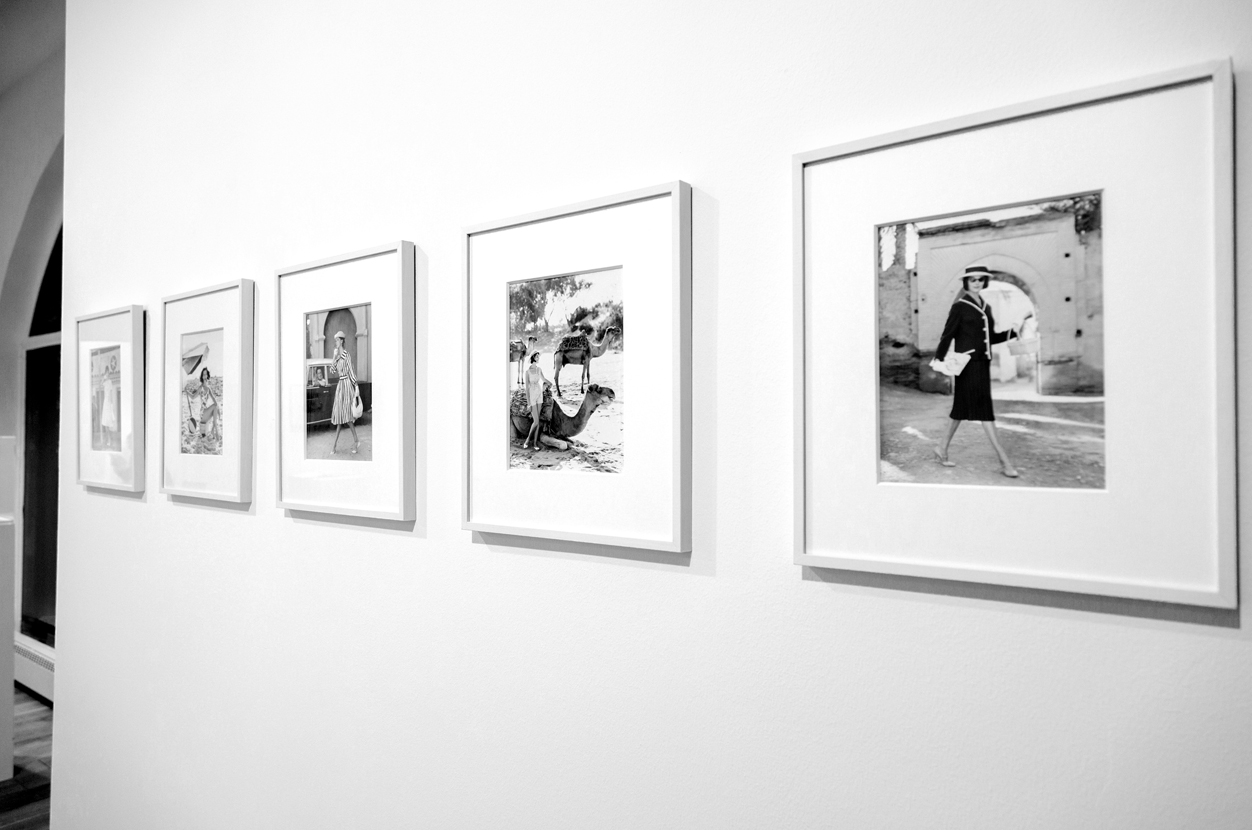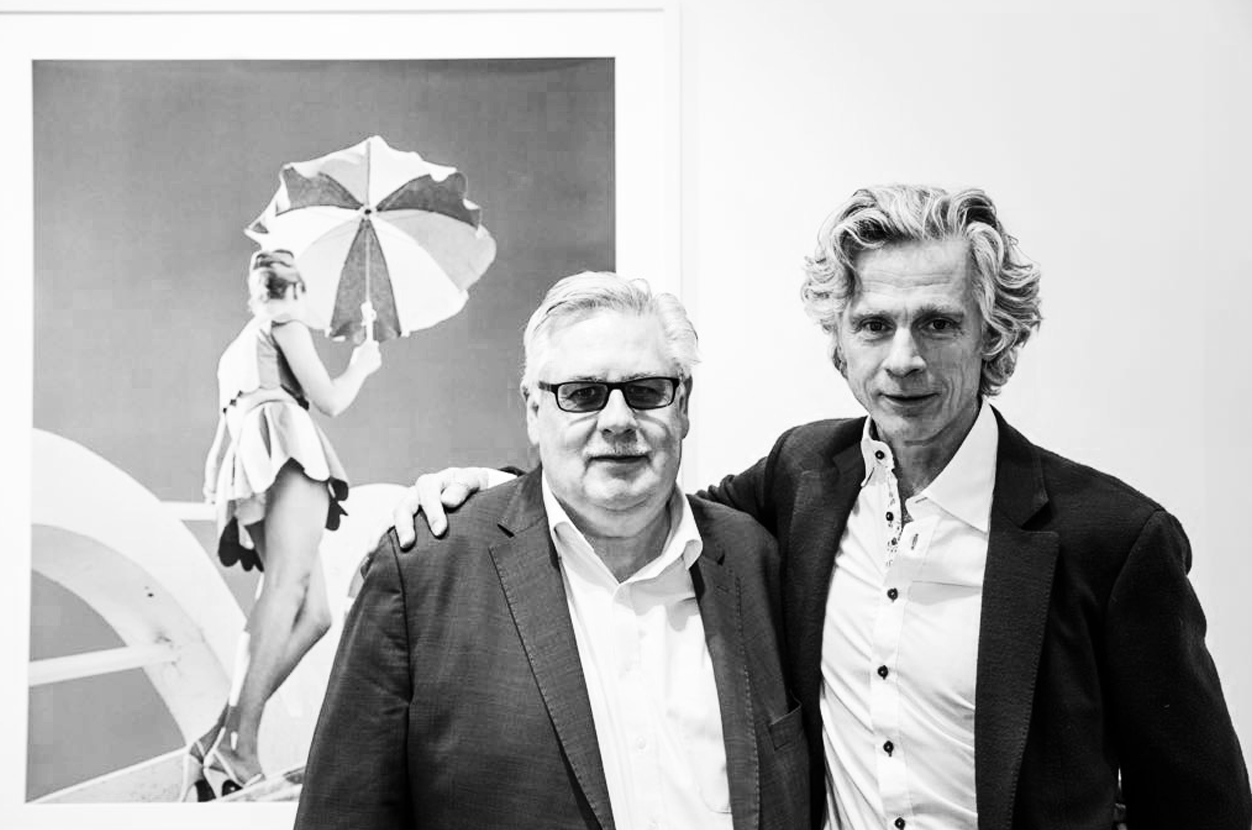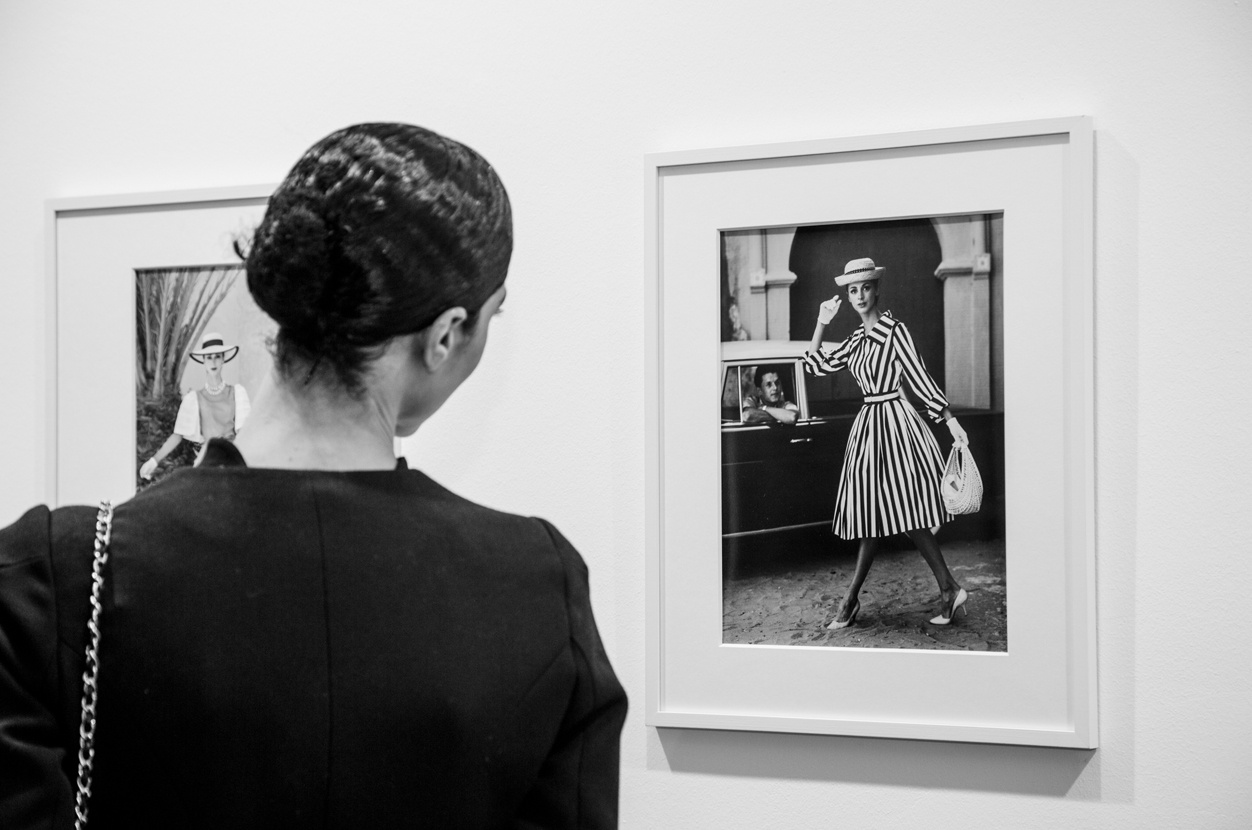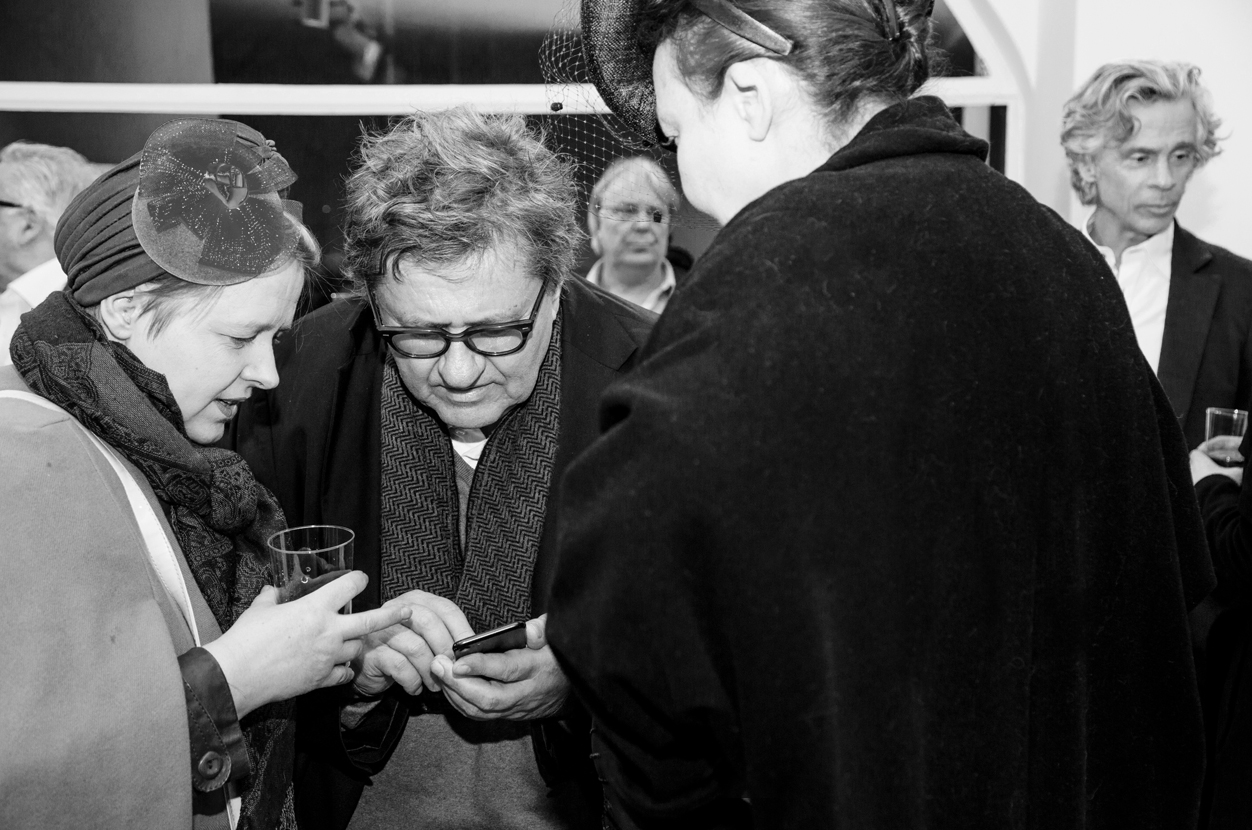KURT ECKERT MEETS FRAU FRIEDA
The exhibition "Kurt Eckert meets Frau Frieda" is a tribute to the wonderfully feminine fashion of the 50s and documents the desire of European women for elegance and luxury, which was fulfilled through the Parisian fashion designer Christian Dior with his fresh style 'New Look'. Swinging skirts with a top accentuating the figure represented the feminine ideal of beauty, whereas the handbag as perfect accessories completed the look and corresponded to the reputable extravagance of the 50s.
Fashion is 'Zeitgeist'. It is made possible by the product of a designer only in the interaction between photographer and attractive models it is properly staged. Therefore, the portrayal of fashion through photography still conveys its meaning and significance in society today.
The photographer and filmmaker Kurt Eckert was a visionary of visual communication and the pioneer of 'lifestyle advertising photography'. Already in the 1950s, he transferred classic fashion- and product photography into emotional moments. He always questioned the medium and took down the boundaries between advertising, public relations and art. During his years in the US, he managed to develop a new imagery through multiple exposures, which took place exclusively inside the camera!
Frieda Vogel is a successful photographer as well. In different countries of the world, she accompanied people and portrayed them in their living environment. With her sensitivity, she managed to create an extraordinary 'authenticity of proximity' to the portrayed. Today her biggest passion is to create extraordinary handbags that are crafted under the brand name FRAU FRIEDA as total works of art the highest quality. Kurt Eckert and Frieda Vogel succeed with their works to convey the 'New Look' of their own language and to create a dialogue between pictorial language and object language. The aim of the exhibition is to discover the emotional moments in the works of both artists, to inquire about the specifics of the exhibits and to explain and appreciate their characteristics, yet to identify them as being anchored in their time and as being characterized by them. This creates a dialogue of a special kind.
